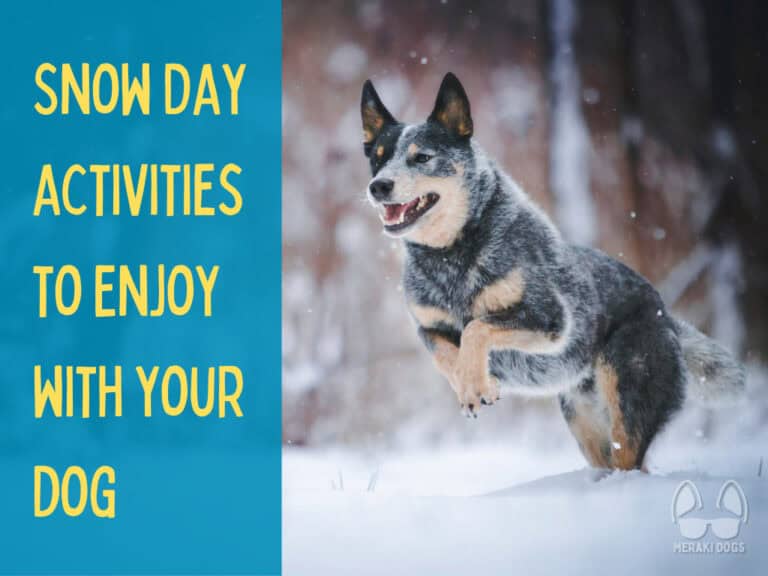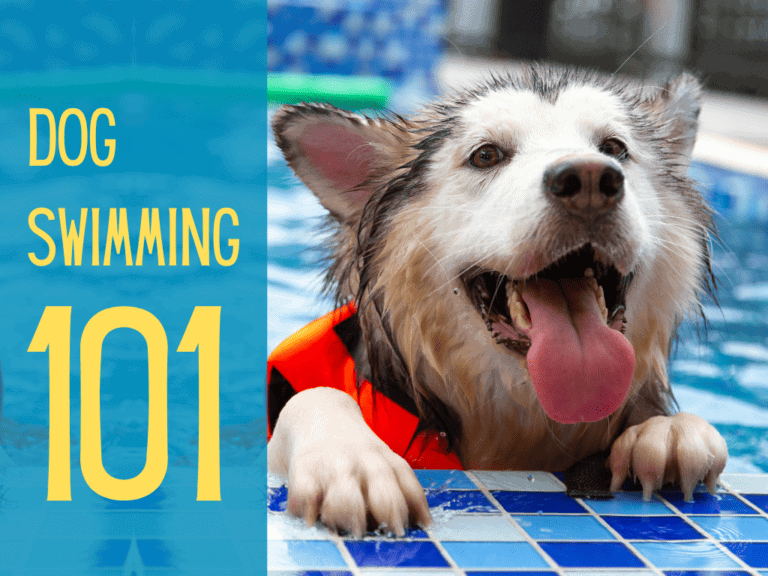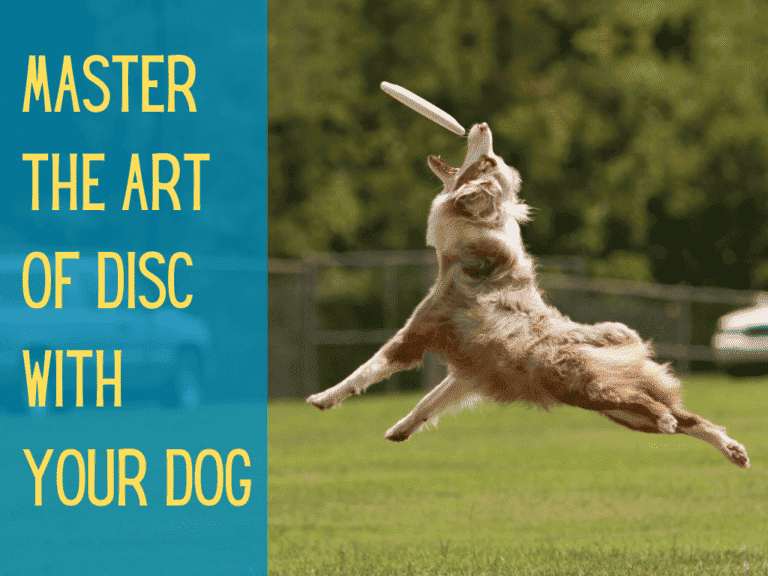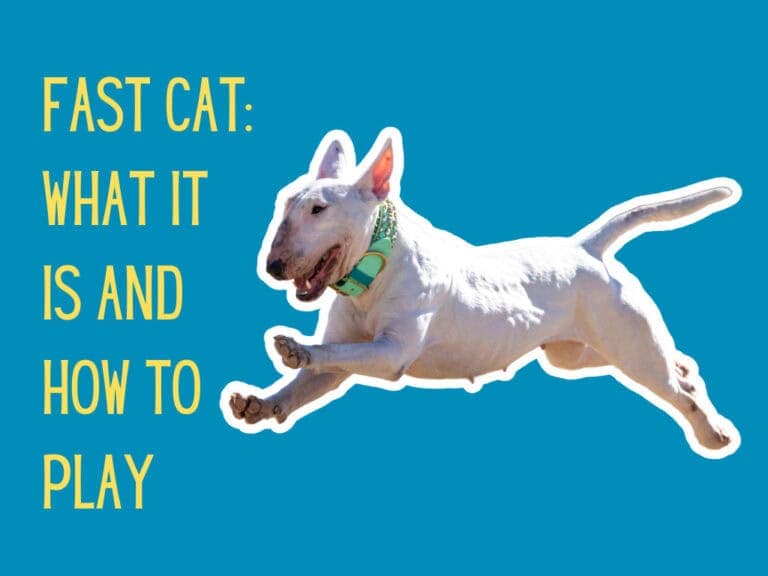Skijoring With Dogs: 7 Basics for Beginners
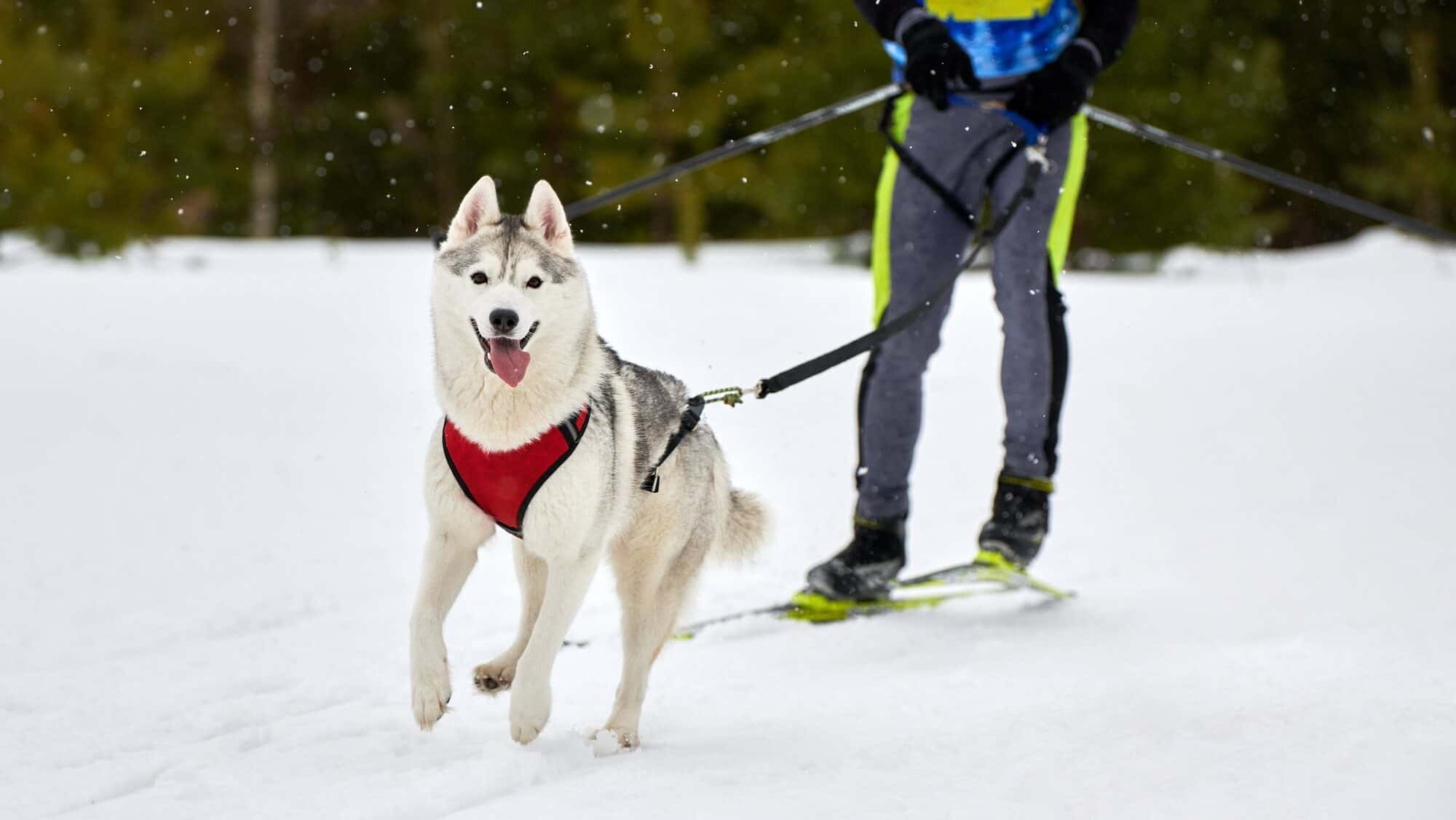
Meraki Dogs may earn a small commission when you buy through links on this site at no cost to you. See our disclaimer here.
If you’re an outdoor enthusiast who loves cross-country skiing and have a high-energy dog that loves to run, skijoring with dogs might just be the perfect winter sport for you both. It’s an exhilarating mix of skiing and dog-powered pulling, where you and your dog work together as a team to glide across snowy trails. Whether you’re new to the sport or looking to give it a try this winter, here’s everything you need to know about skijoring with your dog—from essential gear to training tips.
Key Takeaways
- Skijoring is a winter sport combining cross-country skiing and dog pulling, perfect for energetic dogs and adventurous owners.
- Success requires teamwork, proper training, and the right gear for both you and your dog.
- Start small, prioritize safety, and focus on building your dog’s confidence and endurance gradually.
What is Skijoring?
Skijoring is a unique winter sport where a dog (or multiple dogs) pulls a skier across snowy terrain. At its core, it’s about teamwork—you provide momentum by skiing, and your dog adds power by pulling.
Why Skijoring is a Great Winter Activity
- A Unique Partnership: Unlike other sports where the focus is on the human or the dog, skijoring is a true partnership. You rely on each other for success.
- Great for Active Breeds: Breeds like Huskies, Retrievers, and Border Collies thrive in skijoring, but any medium to large dog with energy to burn can enjoy this sport.
- A Fresh Winter Activity with Dogs: Tired of the same old fetch sessions in the snow? Skijoring provides a dynamic, challenging way to engage your dog mentally and physically.
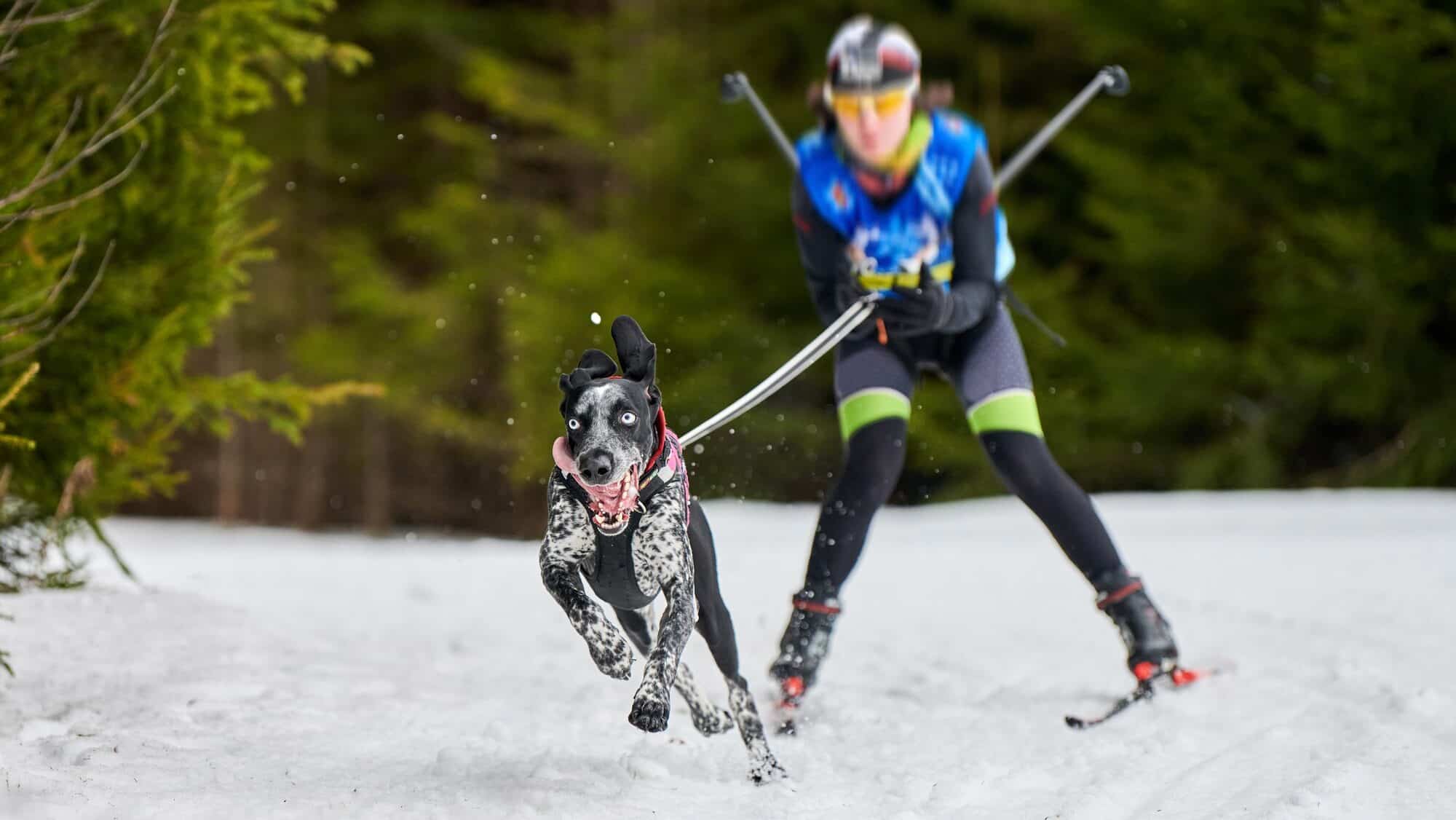
Everything You Should Know When Skijoring With Dogs
Before you grab your skis and hit the trails, here are the essentials you need to know before jumping into this beginner-friendly dog sport.
1. Essential Skijoring Gear
The right equipment ensures safety and comfort for both you and your dog.
- Dog Skijoring Harness: This padded, pulling-specific harness distributes force evenly across your dog’s body, preventing injuries.
- Skijoring Belt for You: A padded waist belt with a quick-release mechanism keeps you hands-free and ready for action.
- Bungee Line: This shock-absorbing towline connects you to your dog, reducing strain during sudden pulls.
- Cross-Country Skis: Lightweight skis (classic or skate style) are ideal. Beginners should start with classic cross-country skis.
- Dog Booties and Jackets: Protect your dog’s paws and body from freezing temperatures and icy trails, especially for longer outings.
2. Choose the Right Dog for Skijoring
Not all dogs are natural-born skijorers, but many can learn with time and training.
- Ideal Dogs: Medium to large breeds with stamina and a love for running—think Huskies, Malamutes, or Retrievers.
- Obedience is Key: Your dog should respond to basic commands like “sit” and “stay” before moving on to skijoring-specific cues.
- Health Matters: Ensure your dog is healthy and free from joint issues. Consult your vet if you’re unsure.
3. Train Your Dog for Skijoring
Training lays the foundation for an enjoyable skijoring experience.
- Pulling Basics: Start on dry land with a pulling harness and leash. Encourage your dog with treats and praise as they learn to pull.
- Introduce Commands: Teach skijoring-specific commands like:
- “Hike” (start)
- “Whoa” (stop)
- “Gee” (turn right)
- “Haw” (turn left)
- “On by” (ignore distractions)
- Practice Short Runs: Begin with short sessions on flat ground to build confidence and endurance.
4. Getting Started on Skis
Once your dog understands pulling, it’s time to hit the snow.
- Acclimate to Skis: Let your dog get used to the sight and sound of skis before you start moving.
- Start Slow: Stick to flat, wide trails that are easy to navigate. Your first sessions should focus on teamwork, not speed.
- Dog Sports Crossover: If your dog has experience in other pulling sports, like sledding, they may transition to skijoring more easily.
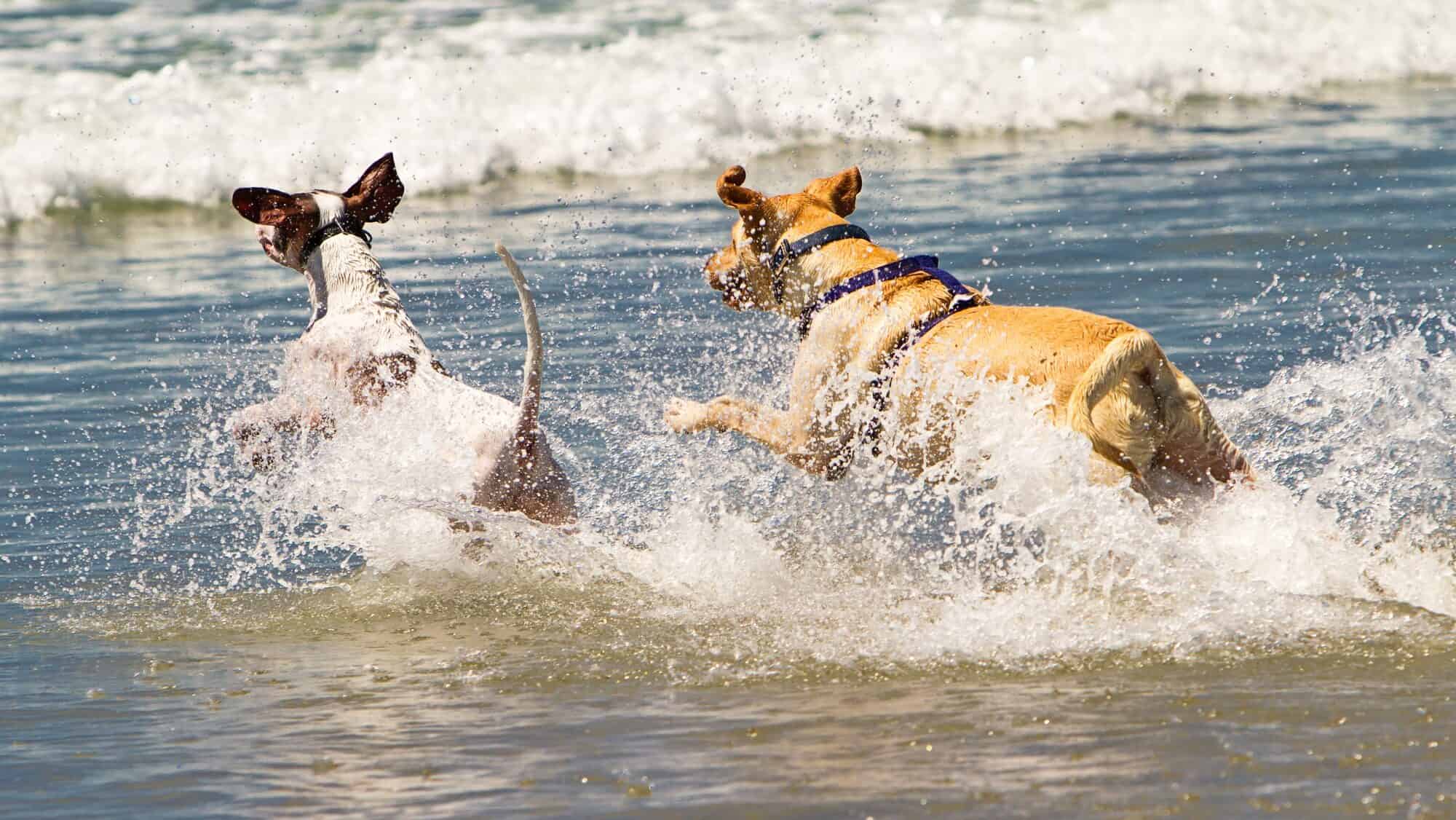
5. Building Endurance and Distance
Skijoring isn’t about sprinting; it’s a test of endurance and patience.
- Short Sessions First: Start with 10–15 minute runs, gradually increasing time and distance.
- Off-Trail Conditioning: Activities like winter hiking, swimming, running, and treadmill training help maintain your dog’s stamina year-round.
- Monitor Fatigue: Look for signs of overexertion like heavy panting or slowing down, and always allow for breaks.
6. Safety Tips for Skijoring
Safety should always come first—no exceptions.
- Check the Weather: Avoid extreme cold, icy conditions, or heavy snowfall. Protect your dog with booties and jackets if necessary.
- Hydration and Snacks: Bring water and high-energy snacks for both of you to stay fueled during longer sessions.
- Trail Etiquette: Keep your dog under control and yield to other skiers or hikers. A well-socialized dog will make encounters with others stress-free.
7. Enjoy the Skijoring Experience
Skijoring is as much about fun as it is about fitness.
- Snow Day Activities for Dogs: Incorporate skijoring into other winter activities to keep things fresh.
- Bonding Time: Celebrate small wins with your dog to strengthen your partnership.
- Stay Positive: Use treats and encouragement to make every outing enjoyable. Dogs thrive when they feel supported and confident.
Frequently Asked Questions
How do I know if my dog is ready for skijoring?
If your dog is energetic, healthy, and enjoys running, they’re a good candidate. Start with pulling basics on land to gauge their interest and ability.
Can small dogs skijor?
Skijoring is best suited for medium to large dogs that can handle the physical strain of pulling. Smaller breeds may struggle with the weight and distance involved.
What if my dog gets distracted while skijoring?
Distractions are common, especially when starting out. Use the “on by” command to teach your dog to stay focused and ignore things like other dogs, people, or wildlife. Consistent practice and positive reinforcement will help reduce distractions over time. If your dog is particularly curious, consider starting their training in a quieter area with fewer stimuli.
Conclusion
Skijoring with dogs is a fantastic way to bond while staying active during the winter months. With the right gear, training, and safety precautions, you and your dog can conquer the trails together and enjoy a thrilling new sport. Start slow, focus on teamwork, and watch as your partnership strengthens on the snowy terrain.
Looking for more ways to stay active with your dog this winter? Sign up for our newsletter for tips, tricks, and inspiration!


